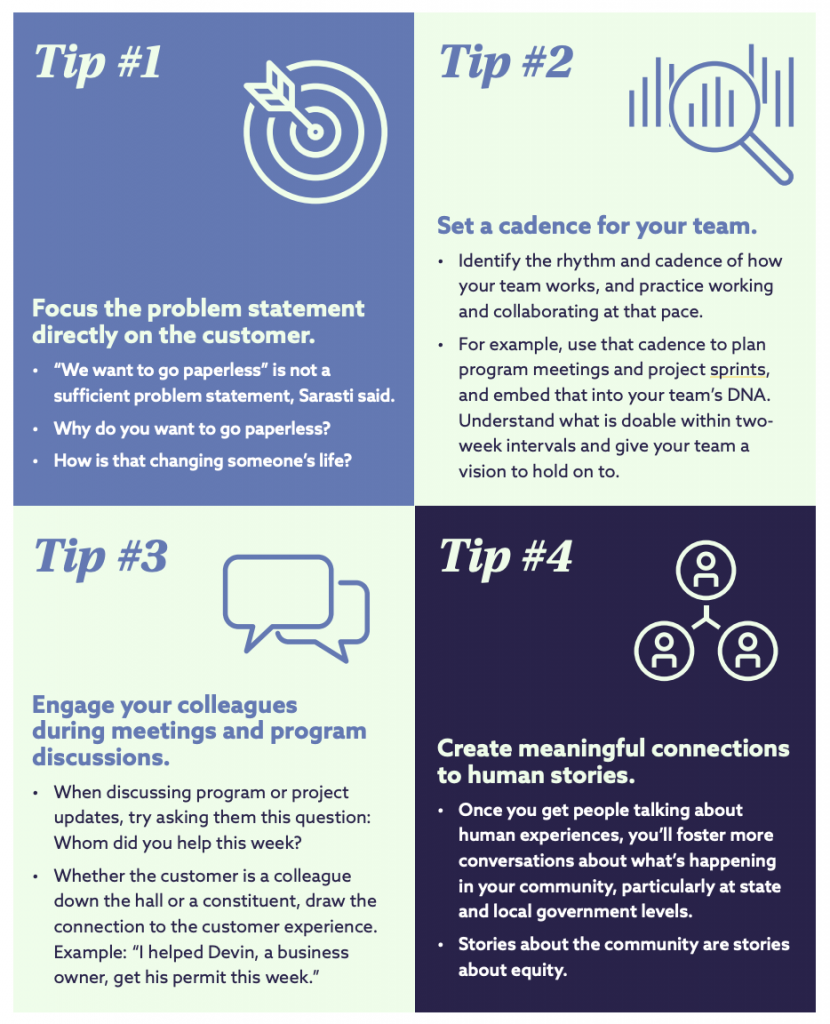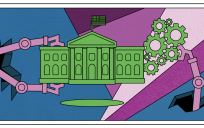Editor’s note: This article is an excerpt from GovLoop’s recent report, “Delivering Government Services Through a Lens of Equity: Technology, Policies and Conversation Starters.” Download the full report here.
As you set out on this very substantial and substantive journey of elevating equity, it might sound basic and perhaps overly simplistic to devote an entire article to emphasizing the importance of identifying the problem you’re trying to solve.
But in our research, we found time and again that stating, understanding and getting consensus on what problems need to be addressed can make the difference between flourishing and floundering endeavors.
It’s likely that technology, in some shape or form, will be part of your effort. You could be relying on a database, online portals, analytics, geographic information systems or an enterprise system unique to your agency. Now, more than ever, being able to access these capabilities from different locations and devices is critical.
Technology, though, is a means to an end, and this ongoing journey is most effective when the problem is defined and revisited regularly.
Mike Sarasti, Chief Information Officer and Director of Innovation and Technology for the city of Miami, shared how concise and clearly defined problem statements or objectives guide the work that he and his team do.
Before we give you a peek into his thought process, you should know that he is one-half of an electro-rock duo. This matters because his identity as a musician is intertwined with his approach to problem-solving.
“I think of myself as a creative,” Sarasti said, highlighting his mission to unlock creativity throughout the city by positioning problem-solving as a creative act. That includes changing the way that information or requests are made to his team and encouraging IT employees to view and solve problems differently.
That’s especially needed during a time when agencies are being asked to tackle persistent inequities, in some cases without the guarantee of added resources to do it. That requires ingenuity and the ability to ask the right questions and be clear about how limited resources — time, money and energy — will be allocated.
Sarasti shared some differences between the former and current problem-solving approaches that his team uses.
Old way
• Employees relied primarily on longer-formatted scope documents from the onset.
• They gleaned useful nuggets from these detailed documents.
• Over time, they became less useful because the team lost sight of the problem they were trying to solve
New way
• Employees kick off every program with a one- to two-page brief that leads with a problem statement.
• Staff are encouraged to start their emails with the problem statement when responding to requests to change a product or system.
• The goal is to create consistency so that people always expect the problem statement to be front and center.
He shared that a customer-focused approach to problem-solving benefits employees in several ways:
• More enjoyable work for those responsible for solving problems
• Better outcomes because employees aren’t required to solve problems in a predefined manner
• More opportunities for innovation as employees creatively think through new approaches and techniques
• A healthy environment where leaders and team members can share their thought processes and perspectives
We also gleaned some practical tips from our chat with Sarasti that you can begin applying today.






Leave a Reply
You must be logged in to post a comment.